Brent Regan doesn’t work the room during the monthly meetings of the Kootenai County Republican Central Committee in Coeur d'Alene, Idaho, because he doesn’t need to: People come to him, as if before a ruler, or a king. He has the confidence of a man who's rarely challenged but always has the upper hand when he is; he’s used to others agreeing that he’s the smartest person in the room. Over email — the only way he'll speak to reporters, after a history, he says, of being misquoted and misunderstood — the community college graduate and Mensa member wields his intellect combatively, like a tenured professor dressing down an unprepared freshman.
He frequently "rejects the premise" of a question and invokes everything from "Cartesian relativism" and "Greco-Roman philosophy" to the Magna Carta when asked to describe his political beliefs. "Your conclusions about conservatism remind me of the Indian fable about the blind men trying to describe an elephant," he told me.
It's this didactic tendency that has helped keep Regan, a man described as both the sugar daddy of the hard right and the godfather of North Idaho politics, from winning elected office. His only attempt — a run for school board trustee, back in 2014 — fell flat. But Regan doesn't want for power. According to those who’ve observed him closely, the loss, one of the few in a gilded life, taught him a lesson: He wasn’t a politician. He was a puppet master.

Many of the most powerful people in political history never held office. Instead, they had money, or they had strategy. Regan has both. As chairman of the Kootenai County Republican Central Committee (KCRCC), he oversees the political maneuvers of the only party that matters in the state’s third-largest county. He is the chairman of the board of the Idaho Freedom Foundation, which grades state legislators on their votes and acts as a de facto conservative policing service. He’s an inventor. He’s very good at enforcing Robert’s Rules of Order. He’s a major donor to PACs that have worked, somewhat surreptitiously, to influence local elections.
“Brent Regan is a real patriot,” a member of the KCRCC told me. “That movie, The Patriot, Brent is like that Mel Gibson character to me. He’s got the IQ and the common sense — he’s the smartest man I’ve ever known.”
And like so many others currently involved in North Idaho politics, Regan’s a California transplant: one of thousands of ex–LAPD officers, doomsday preppers, “traditionalist” Catholics, and far-right evangelicals who’ve flocked to the white, conservative utopia of North Idaho over the last 20 years, working to remake the Republican Party in their own image. Before, they were called libertarians and constitutionalists, or called nothing at all, because there was no political group conservative enough to represent their beliefs. But after the 2008 election of President Obama, they emerged, consolidated power, and began operating under a simple principle: It’s easier to take over a political party than to start one of your own.
Under Regan, the KCRCC has tacked further and further to the right, creating a political platform unrecognizable to Republicans of the past. Over the last three months, they’ve issued resolutions condemning Idaho’s two conservative senators for voting to sanction Russia (the bill passed the Senate 98–2); suggested that GOP gubernatorial candidate Tommy Ahlquist is not, in fact, a Republican (like President Trump, Ahlquist, a Boise businessman, has donated to both Democrats and Republicans); and called for the repeal of the local urban renewal law, dubbing it the “economic equivalent of fascism” (it’s not). In short, they’ve redefined what it means to be an Idaho Republican, working to clean house, on both a local and state level, of those who oppose them.
Those opponents, however, aren’t Democrats — whose political clout in North Idaho is essentially nonexistent. They’re fellow Republicans, who’ve been primaried, peer-pressured, and otherwise pushed out of the party, dubbed RINOs (Republicans in name only), Dirty Liberals, and Socialists. Those in power argue that they’re simply exercising their right to participate in the democratic process. But for those who’ve been excised from the party they’ve long considered their political home, it’s an embarrassing travesty.
“Lincoln founded the party of the ‘big tent’ back in 1854,” one long-serving state senator, fed up with Regan’s machinations, told me. “Why can’t we still have that?” He was referring to the idea, later reinforced by Ronald Reagan, that the Republican Party contains multitudes, that the “divergence of views” is one of its greatest strengths.
In North Idaho, that tent has narrowed to an exclusive and exclusionary group of individuals who, according to those who’ve been subjected to their strategy, demand absolute fealty. The alternative is rejection, formal or otherwise, from politics altogether. Still, Regan doesn’t see the current political situation as “ugly,” even if it is destructive. If he had to pick a word to describe North Idaho politics, it would be “dynamic”: “What would beautiful politics look like?” Regan asked me. “Would it even be politics? To paraphrase Carl von Clausewitz, politics is war by other means.”
In many ways, this is a story of what happens when a two-party system is reduced to one: when a political party becomes so dominant that, without outside opposition, it creates it internally. This particular version of the story is specific to North Idaho, and to the particular type of conservatives who have flocked here to set down roots in its rural soil. Yet its lessons apply across the political spectrum, as battles between the two parties are eclipsed by the destructive and deeply tribalist strife within them.
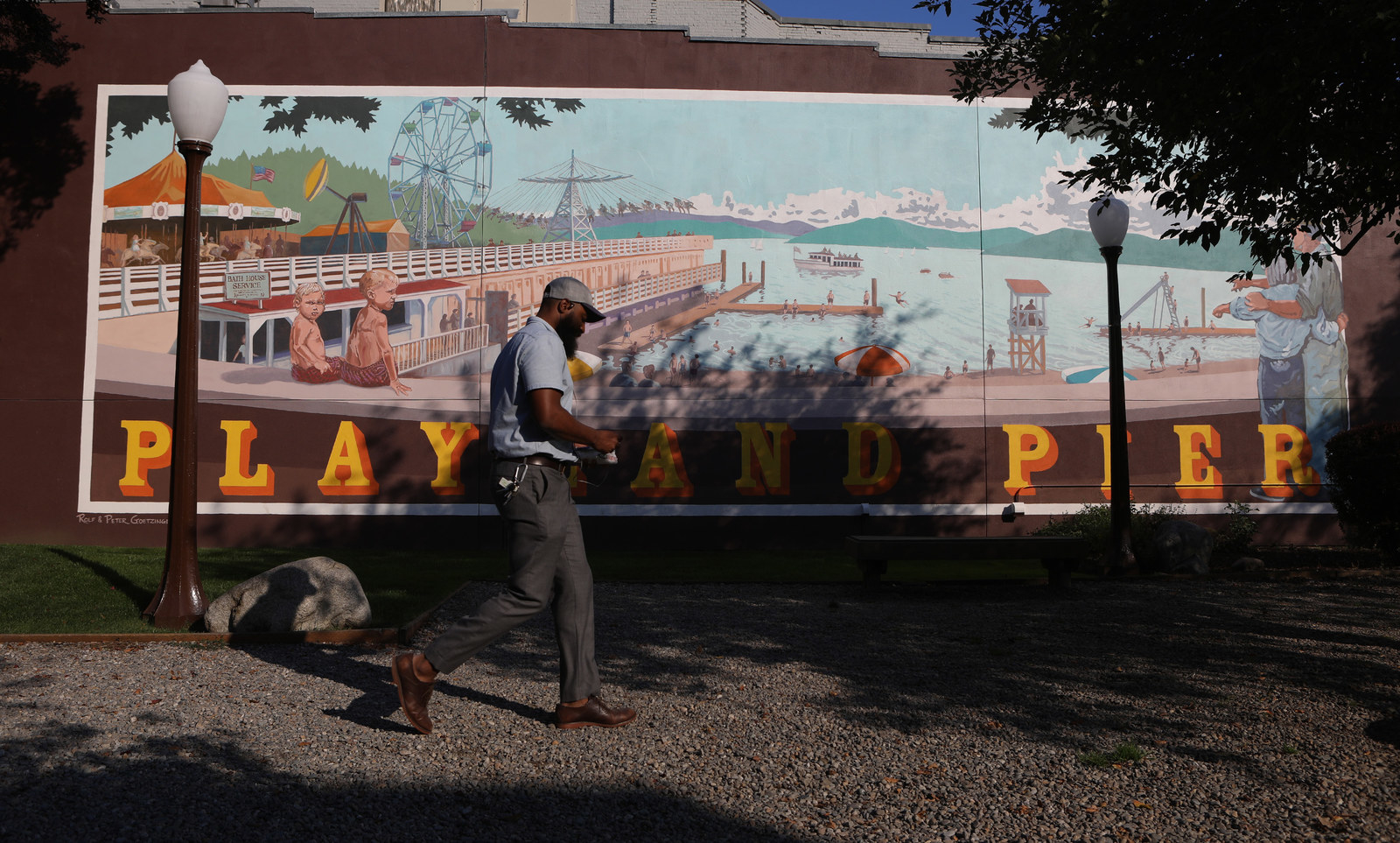
Despite the current governor’s best efforts to encourage people to refer to the region as “Northern” Idaho, North Idaho remains, rhetorically and philosophically, a region apart. It’s not its own state, like North Dakota or West Virginia. But it could be.
North Idahoans will tell you that South Idaho is where the potatoes grow. It’s where the Mormons rule. It’s where the land is flat. The winters and living are easier, the land is less beautiful, the people less fun. North Idaho, by contrast, is filled with mountains and sprawling lakes, with people who minded their own business and liked you to mind yours, with hardworking loggers and miners, with hunters and fishermen and land.
That’s the sort of story people tell themselves about a place they love. It’s part truth, part myth, part well-worn history. But over the last 30 years, it’s become a story that other people started to want as their own. Since the late ’90s, hundreds of thousands have flocked to North Idaho: first to Coeur d’Alene, the small resort town at its heart, and spiraling out from there, onto parcels of land that were cheap and sprawling, into places that felt safe and private.
“I came up here and looked around, and it just felt like America in the 1950s.”
Most came from California, looking for someplace, anyplace, that wasn’t what their state had become. Too liberal, according to some, and too expensive, but more importantly too “dangerous,” especially in the wake of the 1992 Los Angeles riots, with too many gangs, and too much “strife,” an ambiguously charged word I’ve heard used repeatedly.
North Idaho felt different. The population of the county — which includes Coeur d’Alene and several lakes to the north, each surrounded by thousands of acres of cheap land — was just under 70,000. There were few regulations governing how to run your business or build on your land, and Coeur d’Alene had a neat, walkable downtown, right on the lake.
“I came up here and looked around, and it just felt like America in the 1950s.” That’s how Jeff Tyler describes the North Idaho he saw when he first visited, from his home in California, in 1994. “I just started feeling a real calling to move up here.” He wasn’t the only one.
Tyler ran a construction business for years, and today sports the permanent slight sunburn of the semiretired middle-aged man. Like many other members of the KCRCC, he attends Candlelight Christian Fellowship, an evangelical church founded in 1997 by two Californian transplants. Many attendees, Tyler included, consider themselves part of what’s become known as the American Redoubt, a loosely defined group of preppers, libertarians, and conservative Christians who have moved to the thinly populated areas of Montana, Idaho, Wyoming, Oregon, and Washington.
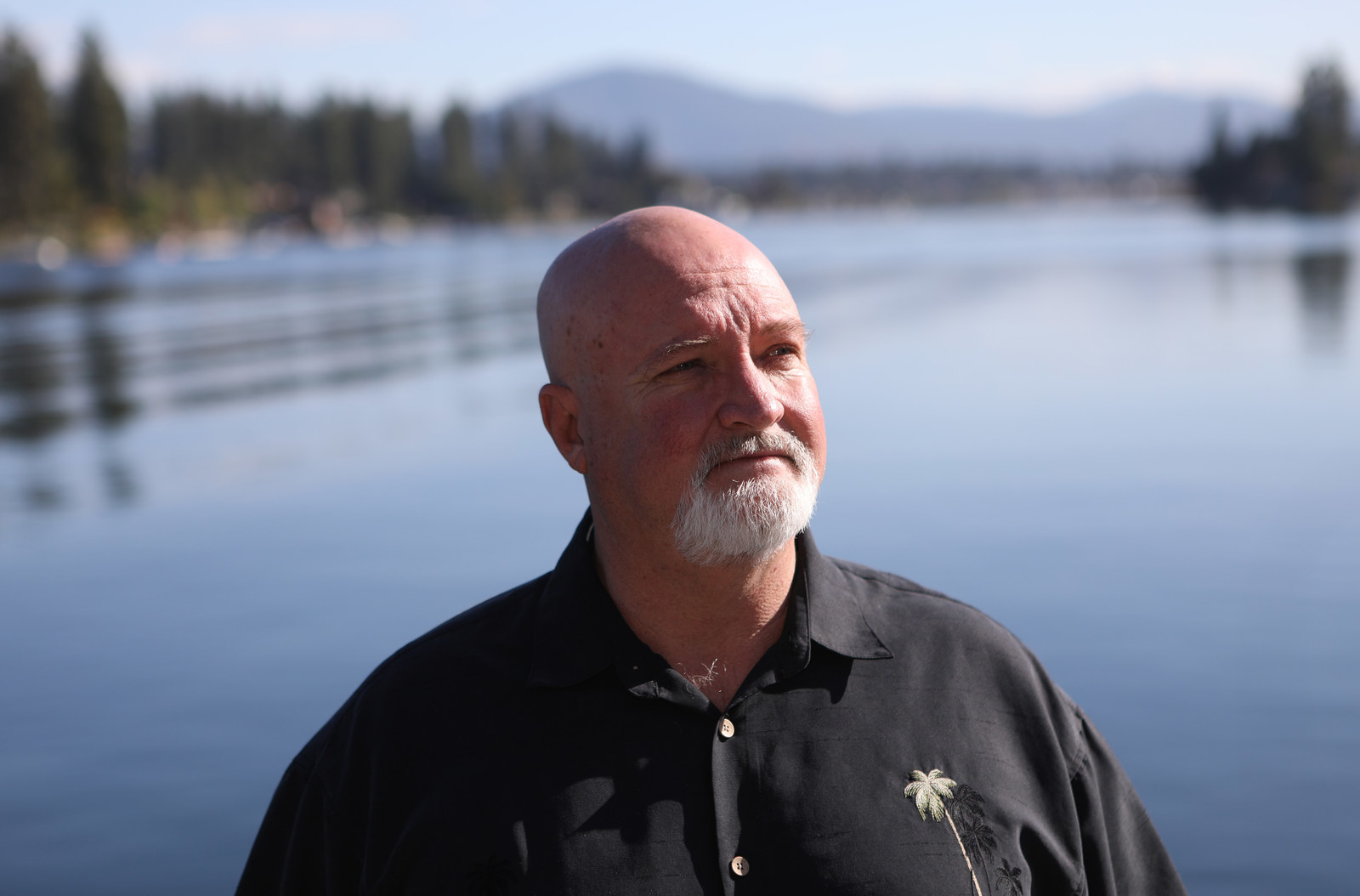
“We all felt called here,” Tyler told me, his voice softening. “It’s kind of like going back in time, you know? It’s all about being self-made, having freedom and liberty, and not having the government in our lives. The Redoubt got started because people wanted to be around like-minded people. It’s no different than California, really, and the people who move there to be around like-minded liberals.”
Who was moving? White middle-class people. Religious people. And lots of retired police officers. As Sierra Crane-Murdoch notes in her history of right-wing immigration to the area, people moved based on word of mouth: Whole evangelical ministries came en masse; one man told the Coeur d’Alene Press that he’d convinced half of his Orange County neighborhood to relocate. Over 500 California police officers, including the infamous O.J. Simpson detective Mark Fuhrman, moved here by the end of the ’90s. Today, that number has multiplied to the point that some call it “LAPD North.”
You could live a good life here on a California state pension, especially if you sold your California home, took the money, and bought a much bigger house in North Idaho. And you could leave behind all the things you dealt with on a daily basis back in California. “I’m not racist, but I just got tired of being a minority in Los Angeles, tired of explaining English to 7-Eleven clerks and counting their change for them,” one California transplant said in 1994. And North Idaho was nothing if not very, very white: Today, it’s 96.2% white; in 1990, it was 98.4%.
Although the Aryan Nations is gone from North Idaho, its specter still hovers at the edge of conversations about the area.
Some articulate their moves as the search for “cultural homogeneity”: “I get accused of racism often for this view,” one transplant wrote on a forum wondering why cops move to North Idaho, “but I believe I have the same right to my views as anyone and it’s NOT about race.” But that cultural homogeneity — coupled with a “mind your own business” attitude — is precisely what appealed to Richard Butler, who situated the Aryan Nations compound in Hayden, just north of Coeur d’Alene, in the late ’70s. Same for Randy Weaver, a sometime Aryan Nations rally attendee who moved to a spread of remote land called Ruby Ridge with his family to prepare for the apocalypse, later facing off with federal agents for 11 days over illegal weapons charges.
Although the Aryan Nations is gone from North Idaho, its specter, along with the presence of Weaver and Fuhrman, still hovers at the edge of conversations about the area. Yet for white people wanting to move there, the sparkling vision of North Idaho remains intact. Between 1990 and 2015, the population of Kootenai County has ballooned 125% — from 69,000 to an estimated 154,000.
The effects of the population boom are most visible on US Highway 95, which runs through Coeur d’Alene and straight north through the county. Constipated by endless traffic lights and big box stores, the gridlock is unending. In many ways, Californians moved to North Idaho and made it over in California’s image — except when it came to politics.
Before the 1990s, Idaho was solidly purple. From 1971 to 1977, and again from 1987 to 1995, the governor was a centrist Democrat. In North Idaho, working-class “lunchbox” Democrats, rooted in the unions that controlled the timber and mining industries, ruled the political scene. When Gary Ingram moved from Minnesota to Coeur d’Alene in 1961, there was no Republican presence to speak of. “I got buzzed up on Goldwater,” he said — referring to presidential candidate and author Barry Goldwater, the father of the contemporary conservative movement — “and formed a Young Republicans Club.”
But it wasn’t until 1972 that they managed to get any GOP candidates into county office — in part by activating the California conservatives who, years before the massive emigration of the ’90s, were already moving to the area. “I learned a lot from mentors with more sophisticated political ideas from California,” Ingram recalled. “For ads on the radio, we’d start with the USC fight song, and then go into a discussion of gun freedoms. When Californians heard that song, we knew they’d pay attention.”
While the Democrats recovered from those losses in the ’80s, the GOP gradually regained their footing: first, through centrist, Reaganist messaging, and then, starting in the early ’90s, by leveraging working-class disillusionment with unions and growing aggression toward liberal environmentalists. It was a perfect recipe for a political coalition: On one side, there were ideologically conservative Californians, retired and eager to preserve a way of life they had uprooted themselves to achieve; on the other were working-class native Idahoans, furious that their way of life (in the forest, in the mines) was coming to an end.
The latter may have disdained the new transplants — a popular bumper sticker from the time reads “Welcome to Idaho, Now Go Home!” — but they agreed more than they disagreed on major issues. Together, their votes helped usher in an era of near-total Republican dominance. Over the course of the ’90s and early 2000s, the margins by which Republicans beat their Democratic opponents kept growing. In 1994, Helen Chenoweth ousted two-term incumbent Larry LaRocco from his House seat, winning by nearly 11 points.
With the Democrats vanquished seemingly for good, the GOP had no one left to fight. And thus, gradually, they began to turn on each other.
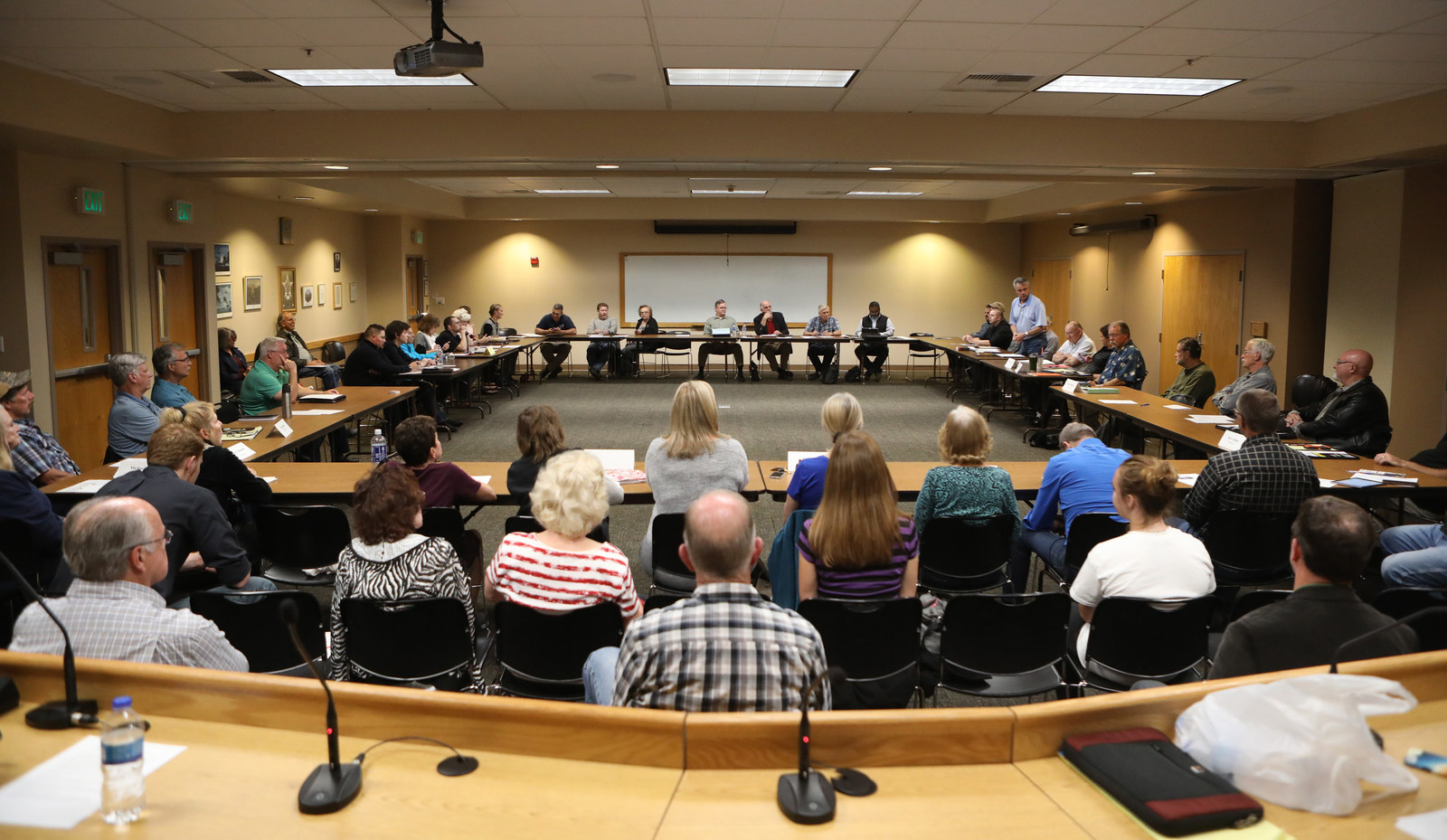
Local political observers disagree as to when things within the North Idaho GOP began to sour. For Sandy Patano, a longtime staffer to Sen. Larry Craig, it was the 2000 primary that first alerted her to “the politics of the people who’d moved here.” She wrote an editorial in the Coeur d’Alene Press warning readers of a group, falsely claiming association with the KCRCC, that was distributing endorsement flyers for far-right candidates. “We called them on it, and none of them won,” she told me. “But that’s when people read the paper!”
But Patano’s warnings could only do so much. In 2008, Obama won his bid for president — and the political muscle of the far right began to flex.
According to former Coeur d’Alene councilman Mike Kennedy, the Obama years “were like a bad moon rising” when it came to conservative politics. Each year, the far-right challenges to the establishment became more vivid. There was the North Idaho Tea Party, whose leader, Pam Stout, became a national face of the movement when she went on The Late Show with David Letterman, and then tax protesters like Phil Hart, who, after years of trying to gain traction as a constitutionalist, successfully ran for the state House as a Republican. And then there were the beginnings of what would become known as the American Redoubt, the outline of which would be formalized in 2011 by survivalist blogger and author James Wesley Rawles.
These groups may have differed on specific policy positions, but they were animated by a common goal: to preserve a certain way of life — far from the liberalizing influences of urban areas — that could resist attempts on the part of the (Obama-led) federal government to interfere in their lives and beliefs. They could not guarantee their utopia through votes alone: Obama’s victory underlined as much. So they set their sights on what they could control — the most local, and most achievable, form of political power: the county central committee.
If you’ve never been involved with politics, it’s natural to assume that the easiest way to take over a party is through major elections. But insiders in many places will tell you that the most effective route is through a county’s central committee. Today, there are 70 publicly elected members of the Kootenai County Republican Central Committee, each representing a neighborhood or area. It may sound like a coffee klatch for people with too much time on their hands — they staff booths at the fair and host an annual “Lincoln Day” celebration, which functions as a sort of GOP prom — but the Central Committee also helps determine who will run for other offices, and the strength with which the local GOP will back them. If a local legislator resigns, the committee nominates the replacement. The committee also controls who attends the state GOP convention, which in turn decides the platform of the state party.
Even with significant membership churn, there had never been a concerted effort to take the KCRCC in a different direction. At least until May 2008. That’s when the first “Ron Paulers,” as then-chairman Brad Corkill calls them, were elected to the committee. “That’s when the meetings became painful,” Corkill told me. They were painful because he outright refused to allow ideological resolutions, like the one the committee issued this past summer about Russia, to even come to the floor. The next year, Bob Pedersen — an Orange County transplant, antiques dealer, pastor, and woodworker — helped 42 committee members get elected, hoping to wrest control of the committee and push its agenda further right.
Pedersen’s attempted takeover of the committee leadership failed, but in 2010, Corkill saw the writing on the wall and stepped down from his spot as president. Even before the Ron Paulers were elected, he’d sensed that the party was headed for significant change. “I held up a copy of Reason magazine at a meeting in the winter of 2008,” Corkill recalled, referring to the libertarian magazine. “And I said, ‘These people are coming.’”
Not coming for Idaho — they’d arrived here long before. Now they were coming for the Republican Party.
It wasn’t as if there was some covert plan to “turn” existing members of the GOP further right. There was no proselytizing. Instead, there was recruitment of those who felt they were “true” conservatives, unrepresented by any party. Most of these new recruits had never been politically active in their lives. They were largely unschooled in political organizing. But they knew one trick: The easiest way to take something over is to simply start showing up in larger numbers than the other team.
Those “teams” were diffuse and difficult to keep straight. In 2010, as anger over the passage of Obamacare reached a fever pitch, conservatives in Kootenai County had two GOP Pachyderms (clubs officially affiliated with the national GOP), the Reagan Republicans, the Tea Party Patriots, the “true conservative” Rally Right organization founded by Pedersen, and a handful more. These groups used social media, but in a place where many people are private and consider politics none of your damn business, they largely spread their message through word of mouth, or, in the case of the Rally Right, via the Nickel’s Worth, the region’s free classified circular.
Pedersen knew the power of the Nickel's Worth and the classifieds section in general: He’d been placing ads in both on a near-daily basis for years, advertising that he bought all manner of old antiques, gold, and jewelry. So after Obama got elected and Pedersen found the GOP’s response wanting, he bought a few ads with pictures of Lincoln, Washington, and Reagan, paired with the text “Are you tired of the Republican Party? Conservatives Unite!” Because he already had a standing ad order, he didn’t have to pay the politics rate, which was considerably higher. On April 1st, 2010, 130 people showed up for the first meeting — and the Rally Right was born.
One of Pedersen's ads in the Nickel's Worth.
“Bob Pedersen did more to advance the far-right cause than anything else with those ads,” Sandy Patano told me. He’d seemingly created a political force out of thin air — and then helped usher them into office. As Bjorn Handeen later put it, "We thought by commandeering the nerve center of the local Republican Party, and then even the state party, we would force a fair hearing of our ideas," he said. "In May 2010, it happened."
That force took over the Central Committee and began a battle with the members who remained. “There’s liberals, there’s progressives, they’re full of Democrats in the Republican Party,” Pedersen told the Coeur d’Alene Press. The suspicion wasn’t unfounded: Republican dominance in North Idaho had led many Democrats to vote in the Republican primary, or even run as Republican candidates, in order to place more moderate candidates in office. In 2011, the state GOP successfully sued the state to “close” the primary, meaning only registered Republicans could vote. As a result, many Democrats have shifted their official registration to Republican; last week, a moderate Republican announced a new PAC, “Moderates Are Taking Hold,” to encourage independents and Democrats to register as Republicans in order to vote in the primary.
How could you spot one of these RINOs? Pedersen would say “you shall know them by their deeds,” but the easiest mark was “support” of Obamacare: voting, as state Rep. Luke Malek and state Sen. John Goedde did in 2012, for Idaho to control its federally mandated exchange. It didn’t matter if those representatives were opposed to Obamacare on principle: As far as Idaho’s far-right leaders were concerned, any vote that led to its implementation was a vote in support, and proof of true socialist leanings. It was framed as a litmus test of “true conservatism” that would become standard in the years to come.
Such “RINO hunts” pushed out or silenced much of the remaining moderate resistance, and the KCRCC began to veer far to the right. In 2014, it issued two particularly striking resolutions: one to rescind the 17th Amendment, which gives citizens the right to elect their senators, and another in support of a local business refusing to perform same-sex marriages in protest of Coeur d’Alene’s newly adopted antidiscrimination ordinance.
With time, the energy around the Rally Right dissipated. Bob Pedersen has largely exited politics, and in 2014, many of those spurred to political action either quit or disappeared from the Central Committee. But the far right was far from done: Remove the head of a powerful political organism and it will simply regrow a new one.
For those involved in local politics, the Pedersen-led power grab has been dwarfed by the group that’s succeeded them. It’s misleading to call them a group: They have no official name, and they don’t hold official meetings, although many attend meetings of the Reagan Republicans and one or both of the Pachyderms. Adversaries refer to them, variously, as “The Wackadoodles” and “The Real Crazies,” but the most common way to reference them isn’t with an attribute but with their leader’s name. The people who’ve taken over the Kootenai County GOP, who’ve navigated it even further right, who’ve issued resolutions supporting Russia — those are Brent Regan’s people.

Regan grew up in California, but considers himself “an Idahoan whose mother was in California when I was born.” His father designed the first coronary stent used in humans in the United States, the heat shield for the S-Band antenna on the Apollo Lunar lander, and dozens of additional inventions which eventually made the Regan family very rich. “Not bad for a guy who started with nothing, had to quit high school to help feed his family, and had to change his [Italian] name to get work,” Regan said.
In 1999, Regan and his wife, Moura, moved from their home in Davis, California, to North Idaho — for the people, he told me, but also for the beauty, and the weather, and to get away from Gray Davis, the progressive Democrat who had recently been elected governor. Like thousands of others who have moved to North Idaho, Regan is a traditionalist Catholic — meaning he is among those Catholics who have broken from the official church, attend mass in Latin, and consider Pope Francis to be a heretic.
Most people can’t tell you exactly what Regan does, and simply call him a genius. Like his father, Regan considers himself an inventor; his company, Regan Designs, describes itself as “a cadre of guerrillas, smart, successful and entrepreneurial engineers with broad practical experience.” He received his associate's degree in electrical engineering, and joined Mensa because of “bias against people without advanced degrees.” He sustains a reputation as a man who knows things, and embodies the phrase “carrying forth.” “It’s hard to have a conversation with him,” Gary Ingram told me, “because you have to do a lot of listening, not a lot of talking.” Or as one Regan supporter put it, “He’s really good at telling someone to go to hell in a way that they look forward to the trip.”
For example, when I asked him to help refine my understanding of liberty-minded conservative beliefs, Regan protested my use of “beliefs,” which infers that they are, in fact, decisions — instead of “immutable truths.” As he elaborated, at length, to me in an email:
There is a right and a wrong, good and evil, and beneficial and detrimental. Society cannot thrive under Cartesian Relativism because it devolves into a muddle of conflicting “truths.” The truths are that American Exceptionalism is the product of Judeo-Christian morality (The Ten Commandments) and of Logos (try to speak Truth), Greco-Roman philosophy (democracy and the idea that nature can be understood) and Anglo-Saxon Law (Magna Carta, the laws apply to all, even the King). The result is articulated in the most powerful political statement in history, the second paragraph of the Declaration of Independence. The Constitution is a covenant between the states to create a federal government. The Bill of Rights does not grant rights, it forbids the government from infringing on those rights which “are endowed by their Creator.”
You get the picture. In 2009, Regan gave a booming, well-received speech to the North Idaho Tea Party. According to those who were close to him at the time, he privately voiced desires to run for Congress — and for Idaho to secede from the Union (Regan denies this). He was a regular and generous donor to conservative candidates and causes; in 2012, his mother hosted a lavish fundraiser for Mitt Romney in her Hillsborough, California, home, attended by Regan. He didn’t seek public office until 2011, when he successfully applied to fill the Coeur d’Alene school board trustee seat that had been vacated mid-term.
Regan’s qualifications for the trustee position were limited to his experience managing a business. His own children had not attended Coeur d'Alene schools; he had provided seed funding for Reach America, a Christian leadership organization that advocates pulling Christian kids from public schools. (Regan counters that he sponsored one student’s attendance at a leadership training seminar, which then “morphed into the fake news you cite.”)
And then there were his comments at a legislative forum on firearms, where he recounted a conversation he’d had with this wife. “I said, ‘They can’t figure out what an assault weapon is — it’s just black and scary.’ And she just looks at me and says, ‘Well, so is Obama.’”
All of the above became points of contention when, five months later, the term Regan had been appointed to fill ran out, and he faced Christa Hazel in a district-wide election. When most people think of school board trustees, they think of women like Hazel: highly involved parents with experience in the educational process. Hazel knew she could beat Regan in the popular vote, which she did by 600 votes — a solid majority for a small-town school board election.
The defeat marked the end of Regan’s outward-facing political career. But his true influence had just begun. “He figured out that he’s not really good at being a politician — that when he opens his mouth, he inserts his foot,” one political consultant told me. “He’d rather be the power player, pushing his money and his influence.”
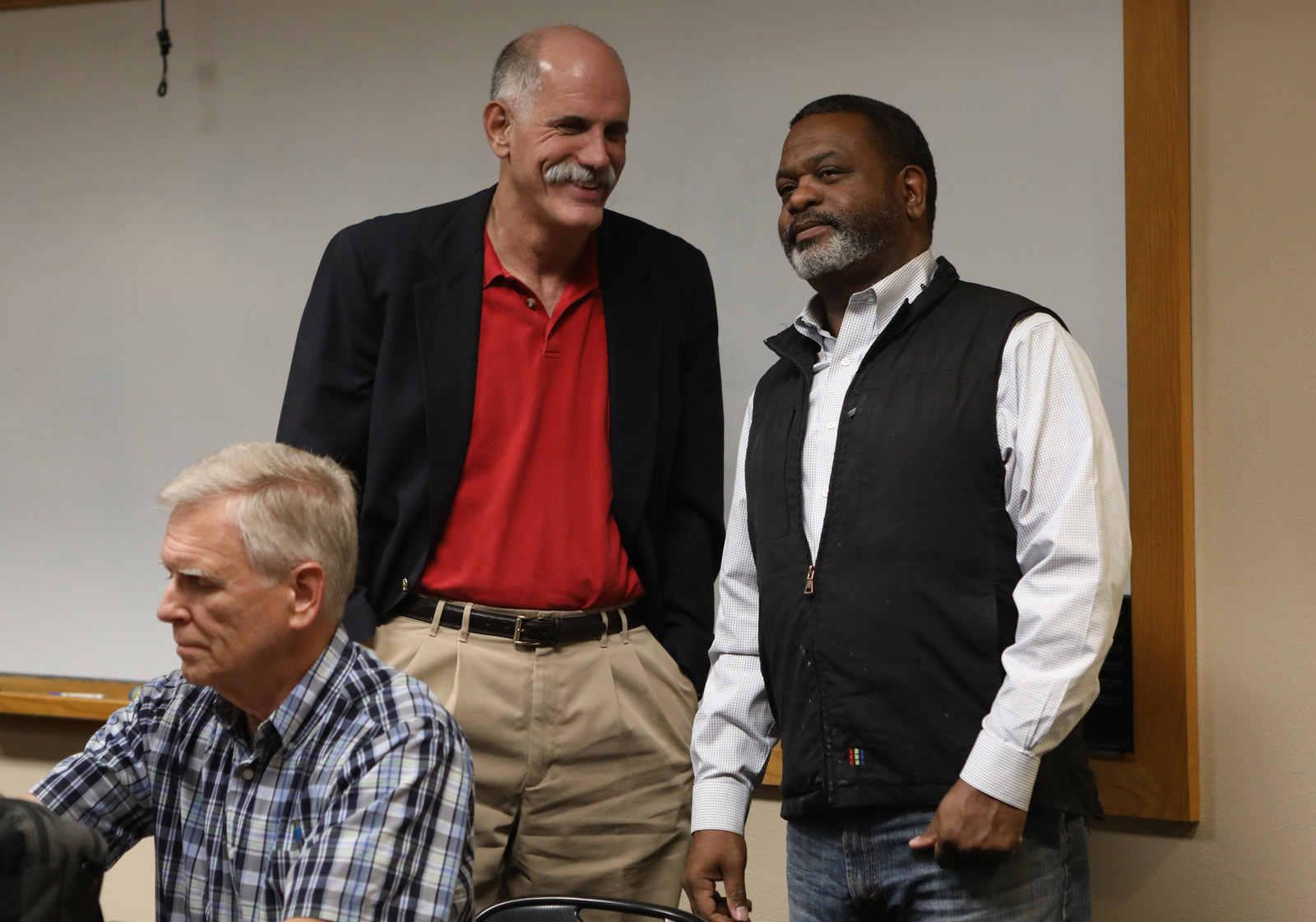
Everyone in Kootenai County politics knows Regan’s acolytes and enemies, those in his favor and those out of it. But if Regan is the current sun of the far-right conservative system, the planets in his orbit are a varied bunch. Some, like committee secretary and “Bard of the Redoubt” Alex Barron, are traditional Catholics who moved here to be part of the Redoubt community. Bjorn Handeen — who sponsored the committee’s resolution against Russia sanctions — is more of an ideological wild card, an anti-globalist who attempted to create a KCRCC committee that would vet candidates "to determine if they are true Republicans."
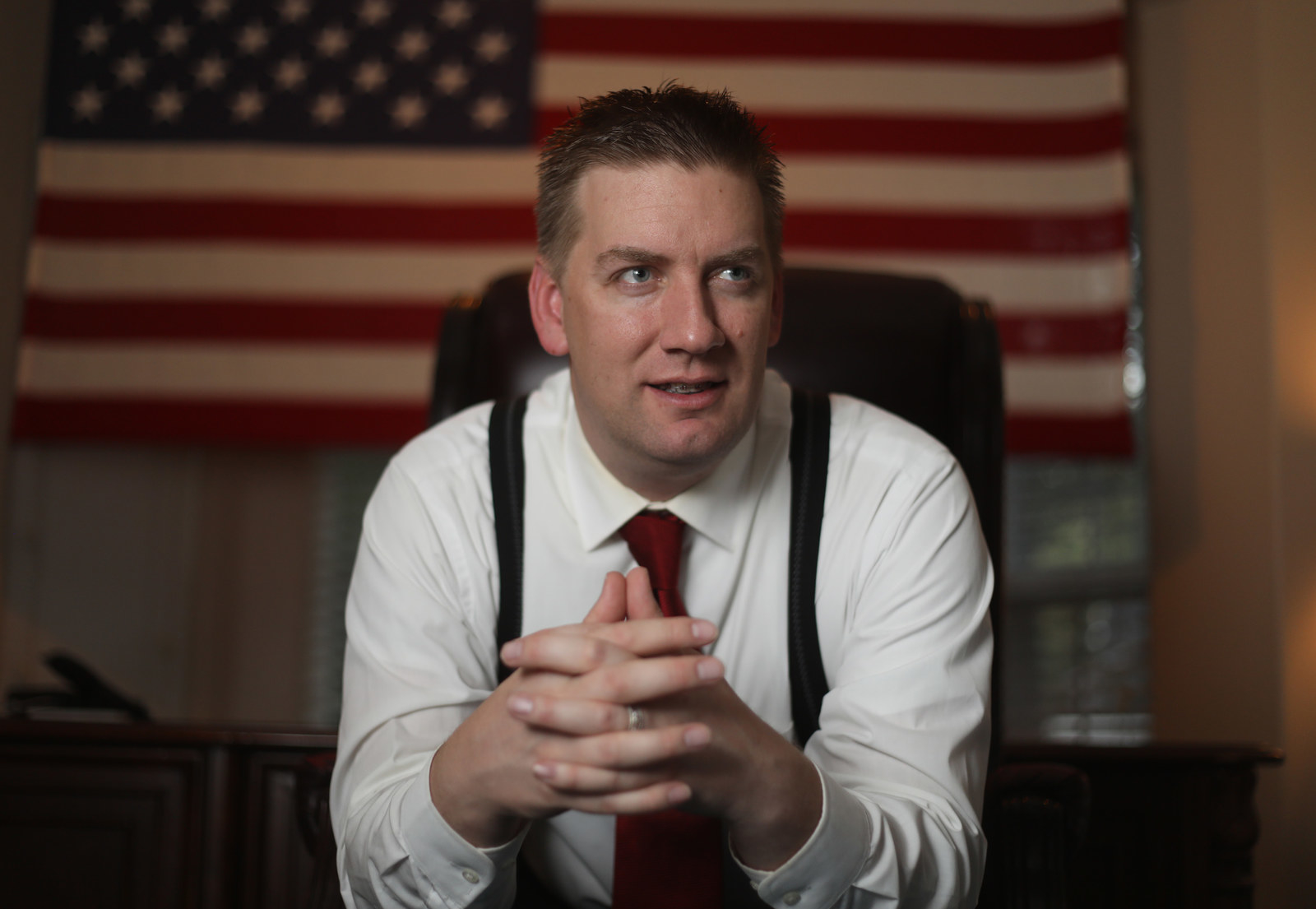
There’s also Todd Banducci, elected as trustee of the local junior college after pledging that he’d be “its worst nightmare” because he “clings to his guns and his Bible because he knows his God,” and Vito Barbieri, a House rep whose major legislative focus has been eliminating restrictions on raw milk. There’s Jeremy Morris, an unabashed shit-stirrer featured on Fox News for a fight with his local housing association over his massive Christmas display. And then there’s John and Angela Cross, who’ve been part of the local GOP infrastructure for years and fell in line when a new leader took over.
They’re all part of what one Regan critic referred to as “the whole constellation of wackadoodles,” which expands to include Heather Scott, a far-right legislator from Sandpoint best known for her visits to the Malheur National Wildlife Refuge standoff and for posing with a confederate flag, and Michael Snyder, an anti-IRS, anti-EPA author currently vying to become North Idaho’s next representative to the House. But the brightest star of the constellation is Raul Labrador, one of the most conservative members of the US House — who recently announced his intention to run for Idaho governor and has spent considerable time courting the Central Committee’s endorsement.
“I think Ronald Reagan wasn’t as conservative as we think he is.”
The politics of the members of this group are “conservative” and pay repeated homage to Ronald Reagan: on their websites, in their literature, in their letters to the editor. No matter that Reagan was a great champion of compromise (as Ingram put it to me, “I think Ronald Reagan wasn’t as conservative as we think he is”) he remains their patron saint. According to Brent Regan, “liberty-minded,” a phrase often deployed on campaign literature, is shorthand for “libertarian-leaning conservative,” which entails “support for traditional Judeo-Christian values, Western Civilization, and Individual liberty.”
Jeff Tyler exemplifies this particular political posture, especially as it manifests in Kootenai County. After Obama’s election, Tyler started attending one of the local Pachyderms, and later cofounded the Reagan Republicans. “We started it because we loved Ronald Reagan and wanted a country like that,” he told me over lunch. “One where we pay attention to the Bible and the Constitution.” In 2012, he attempted to run for state representative, but lost the primary by nine votes to a member of the Rally Right. The loss didn’t faze him. “My wife asks me why I’m so involved in all this,” he said, “and I’m like, would you rather I just play golf?”
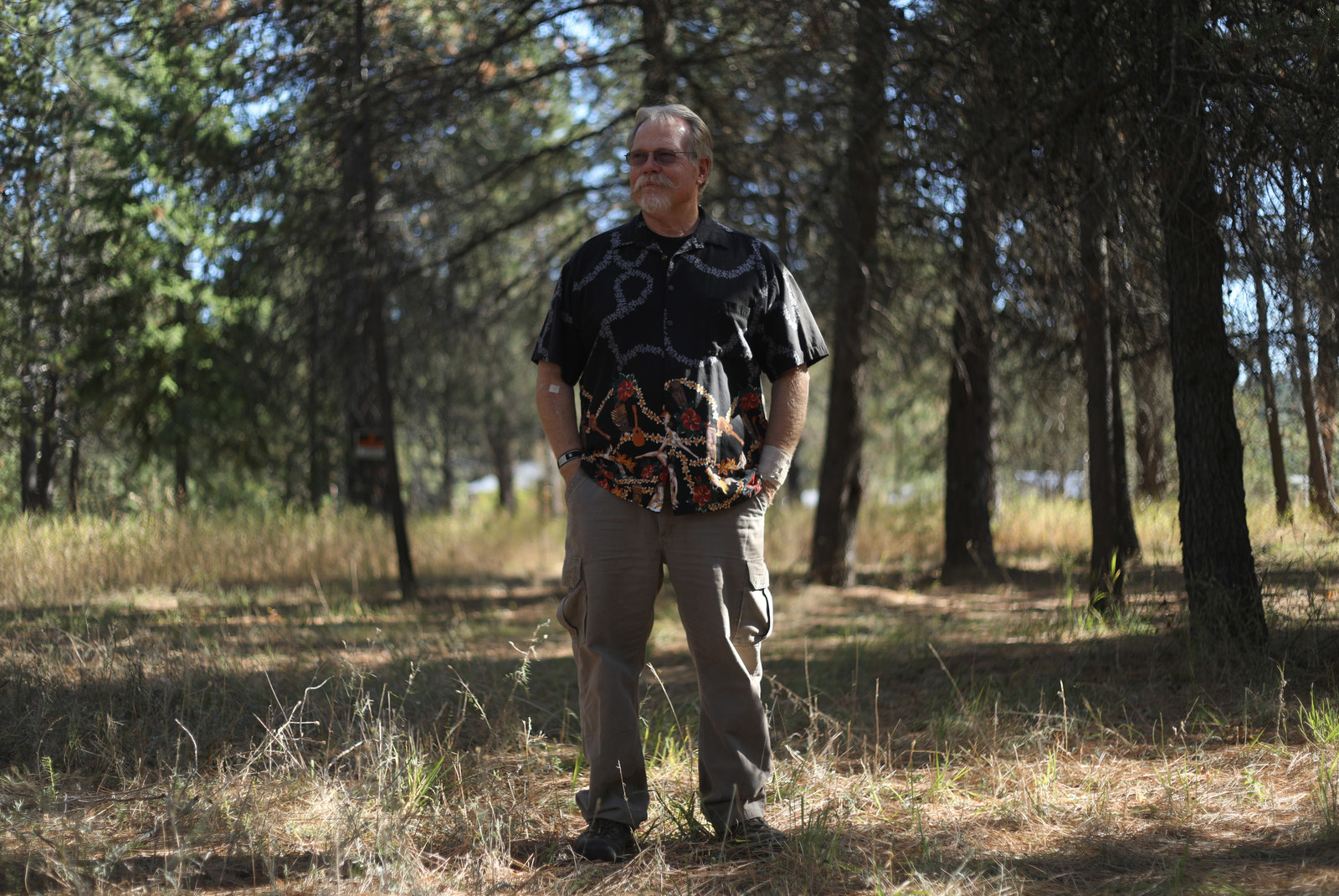
Tyler has taken to calling the California he left behind “the occupied zone” — a phrase that originated with Don Bradway, a fellow member of Candlelight, the KCRCC, and the unofficial Brent Regan fan club. (“He’s a great communicator,” Bradway says of Regan. “He just works well with others.”) Bradway retired to North Idaho in 2010 after a career as a firefighter and consultant in California; since then, he’s become something of the national face of the Redoubt. In California, he was a longtime organizer with the NRA and hosted a traditional Hawaiian music radio show; today, he’s known for his Hawaiian shirts, robust moustache, and writing for the Redoubt News.
“Think about that: We have Republicans who high-five liberals.”
Bradway and Tyler don’t think that talking to liberals takes away your conservative card. “I’ll talk to anyone!” Bradway told me, before joking that he’d eat my liver with a glass of Chianti if I misquoted him. It’s RINOs that infuriate him and the rest of the Central Committee leadership, especially when, as he sees it, they aim to interfere with the way of life the Redoubt is trying to preserve in North Idaho. “We have Republicans who get elected to represent their constituents, then don’t,” Tyler told me. “John McCain ran on a platform to repeal Obamacare, but then became the lone vote to perpetuate it — and then walked over and high-fived Chuck Schumer! Think about that: We have Republicans who high-five liberals.”
Tyler and others say the only membership requirement to be in Regan’s camp is to be a true, liberty-loving conservative, but the truth is more complicated. You don’t necessarily need to be a Christian, but you should believe in Christian values — and the ability for Christians to practice their beliefs without restriction, which includes supporting “school choice,” aka using federal funds to support religious schools. You believe that the Johnson Amendment — which forbids nonprofit organizations, including churches, from making political contributions — is unconstitutional. You should be against any increase in “unnecessary” spending, any expensive public works — like the pricey renovation of a lakeside park in Coeur d’Alene, which prompted an attempted recall of the mayor and city council, or the recently proposed transit center, dubbed “a Taj Mahal for government employees” by Alex Barron. You should also oppose the growth of government, especially Obamacare and the “perverse incentives and waste,” as Regan put it to me, that have resulted from it. And you must disaffiliate yourself with those who don’t believe these things.

Christa Hazel’s conservative credentials have been challenged, for example, because she posted pictures to Facebook that included “known” liberals. A far-right blog accused Duane Rasmussen, one of the founders of the North Idaho Pachyderm Club, of “bringing Socialism to Kootenai County” for making friends with Spokesman-Review columnist Dave Oliveria, who often published photos Rasmussen had taken of GOP events. When lieutenant gubernatorial candidate Steve Yates spoke at a recent Central Committee meeting, he was challenged for attending Johns Hopkins, a liberal school.
For many, it’s an exacting, and exhausting, sort of tribalism. As Deborah Rose, a political observer who’s been warring with Regan and his followers in the comments of newspaper articles for months, put it to me, “Here’s what bothers me so much: I agree with them on 95% of this stuff! But then the 5% that I don’t — that’s what makes them call me a liberal.”

Regan may function as the de facto political godfather in Kootenai County, but his exercises of power are rarely flashy. He’s only been a committee member since May 2016, when he was also elected chairman. But he’s been operating in the background for years. In 2013, he funded the Jeremy Morris-led Truth North Idaho which sent emails under pseudonyms asking candidates for city council about their positions on reproductive rights and public prayer, then posting their responses, out of context, on the group’s website. (Morris claims that the group was simply illuminating the liberal beliefs of candidates claiming to be nonpartisan.) In 2015, Regan was the sole funder of Responsible CDA, which sent out flyers that many called “misleading” in support of hard-line Coeur d’Alene city council candidates.
Last year, he helped tap someone to run against Gary Ingram, the man who’d helped build the Republican Party in North Idaho, for his position on the Central Committee. “It was just some guy they hauled in,” Ingram told me. “But I beat ’em.” (Regan says that he heard a rumor of someone else doing so, but had no firsthand knowledge of it himself.) He was also the primary funder of a group calling itself the KCRCC — Kootenai County Republican Concerned Citizens — which distributed literature with endorsements of far-right candidates; its $6,100 disclosed funding was obtained, in its entirety, from Regan’s company, Regan Industries.
The Kootenai County Republican Central Committee is officially forbidden from endorsing specific candidates in a Republican primary — but independent PACs are not. These Concerned Citizens flyers, labeled with "KCRCC," seemed designed to blur that distinction. At the time, the group’s membership — other than PAC treasurer John H. Thyssen — and vetting process were unknown. But an email asking for the approval of two Concerned Citizens flyers, later obtained by the Coeur d’Alene Press, was sent by Central Committee member Jennifer Locke to six other members of the Central Committee, including John and Angela Cross, then–committee chairman Neil Oliver, and Brent Regan. In 2016, Regan donated $10,000 total to the Concerned Citizens; when asked about its activities, Regan responded, “I just gave them money. I don’t have anything to say about them.”
An example of a KCRCC rack card.
The Concerned Citizens may not be affiliated with the KCRCC, but its acronym and rack cards — aka flyers distributed with voting endorsements — do little to dissuade voters from assuming a direct connection with the Republican Party. For voters unfamiliar with the particulars of primary politics, rack cards like these function as a sort of cheat sheet: Just bring it along to the polls, as the card suggests, and follow the voting endorsements all the way down. With primary election turnout at an all-time low, rack cards also become a means of leveraging power — or at least sending a pointed message.
That’s what happened to Bob Nonini. A proud native Idahoan, Nonini was KCRCC chairman for six years before he headed to the state House in 2004, and, eight years later, the Senate. Today, he boasts that he is one of the most conservative legislators in the state, a claim backed up by the Idaho Freedom Foundation, the Regan-chaired organization that tallies and ranks legislators according to their votes.
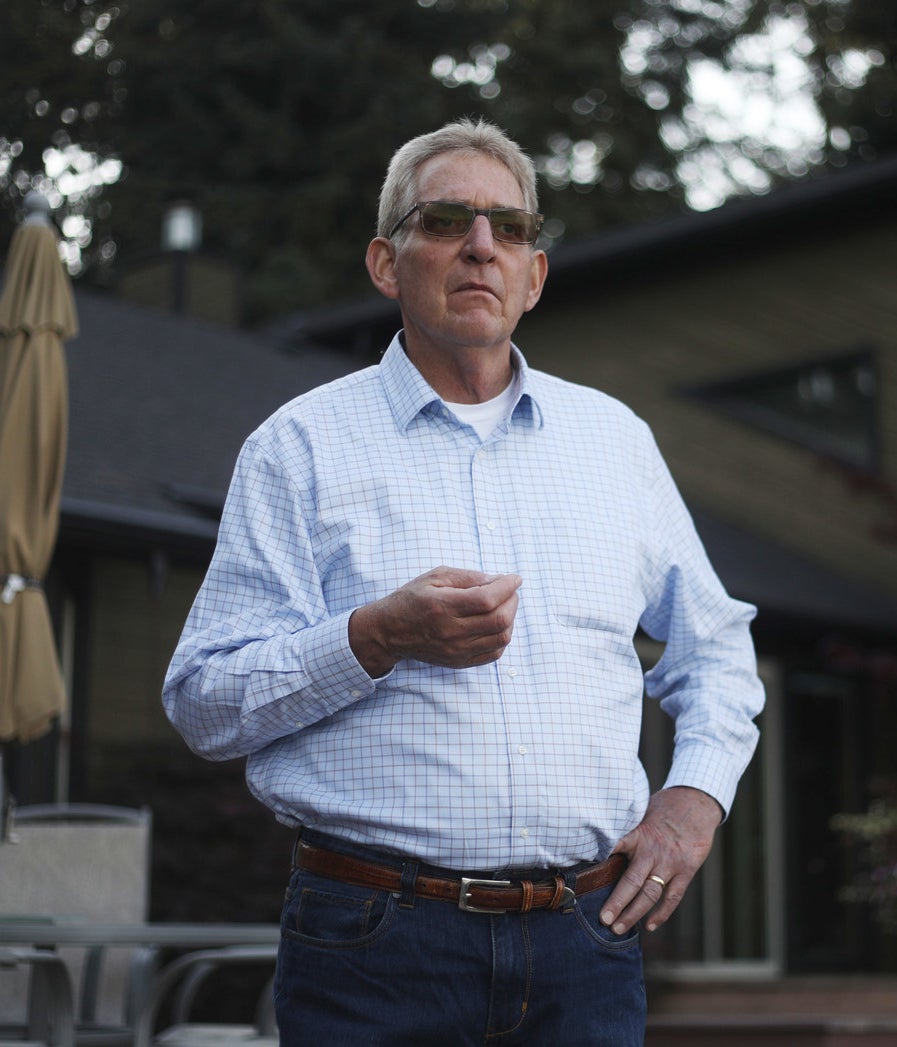
In the early ’80s, Nonini was arrested for cocaine possession with the intention to distribute — but never convicted. These days, he’s a devout Catholic, wiry and no-nonsense, with the sort of early-morning energy of a man who does a day’s worth of yard work before 8 a.m. Last year, he was running unopposed for his third term in the state Senate. But then Regan ally Angela Cross launched a campaign against him on Facebook, urging voters to write in anyone else — and he was dropped from the Concerned Citizens rack card.
The reason, according to Nonini, was straightforward: During the Republican primary, he had supported Shawn Keough, a veteran senator from a district an hour north, over her far-right challenger. His wife, Cathyanne, had also authored a Facebook post with a list of candidates that “we” were endorsing, including a “known” RINO running for state House.
In response, Nonini says, Regan approached him after a meal and chided him that he “better control his wife.” Retelling the story, Nonini was still in disbelief. “I don’t tell my wife how to vote!” he exclaimed. “So I took my phone, handed it to him, and said, ‘You call her.’” (Regan calls this description “slanderous and sexist” and recalls the conversation differently; for his full description, along with our full email exchange, see here.)
“They can’t call me a RINO. What they don’t like about me is that I don’t give obedience.”
Nonini handily won his race and has recently announced his intention to run for lieutenant governor. But he’s still angry about how Regan and those who follow him handled the election. “I’m the most conservative guy in office! No one can criticize me and my votes,” he said. “They can’t call me a RINO. What they don’t like about me is that I don’t give obedience.”
No matter how ideologically loyal an elected official might be, it’s challenging to remain “obedient” when faced with the realities of running a government. Nonini, for example, admits that when he was first elected, he was a “bomb thrower” down in the capital: He’d blow up or otherwise sink legislation instead of compromising in any way. But he learned, over time, to reach across the aisle, even in small ways — something that the Central Committee frowns upon.
There’s an overarching disconnect, in other words, between philosophical desires and what legislators can actually achieve — either because of the limits of the office (they cannot, for instance, change federal case law, or modify the federal Constitution) or because of the limits to what obstructionism can yield. Yet the gulf between hope and reality is so massive, and so motivating, that it leads both voters and members of the Central Committee to keep electing new people, with the hopes that one will succeed where the others have failed. It’s a sort of political amnesia that’s not unique to North Idaho, but it’s largely cleared the local, state, and even national political scene of those with political experience — especially if they’ve cooperated, at any point, with anyone who wasn’t conservative.
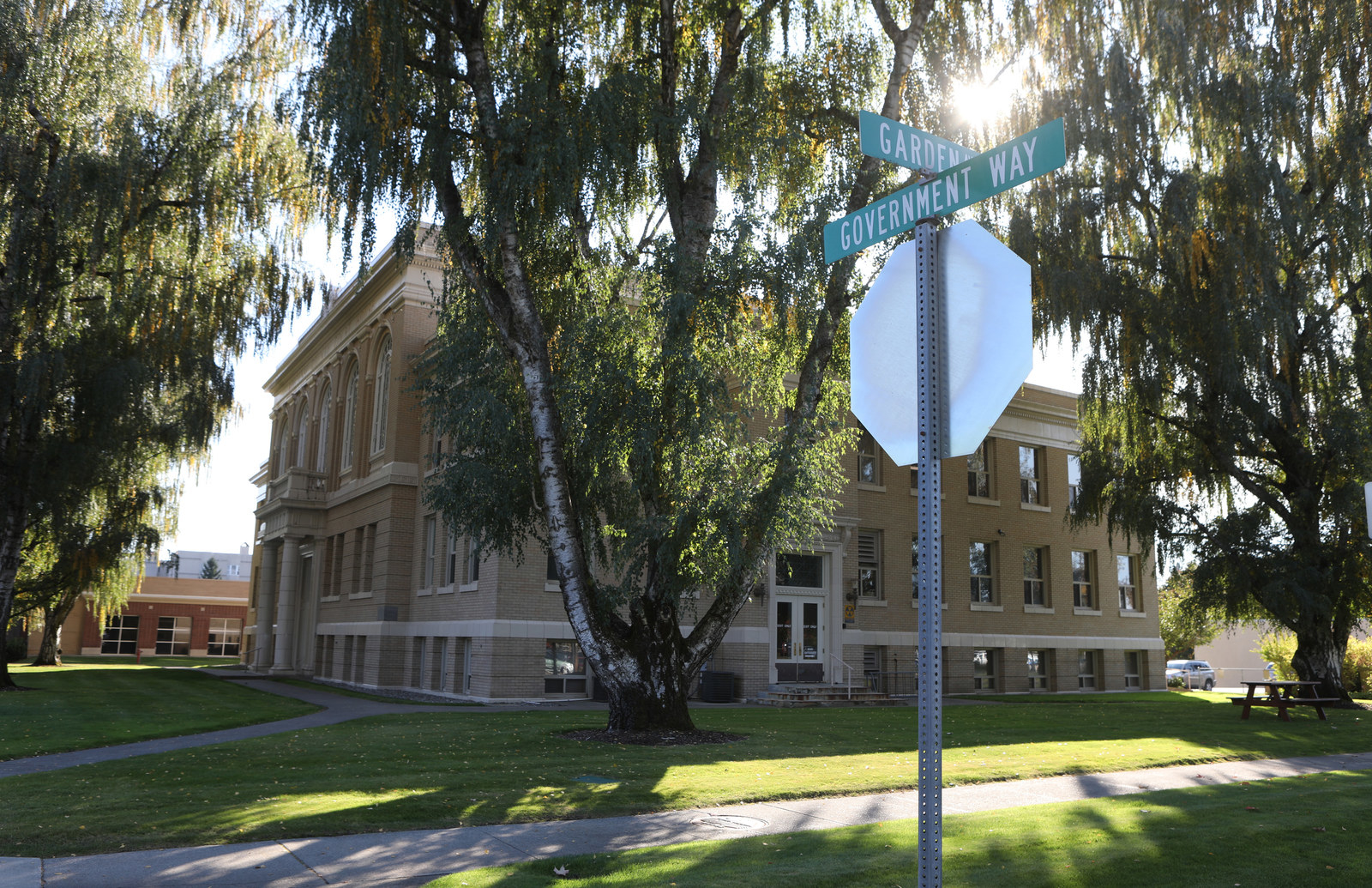
Those in power have also moved to tighten their control of the committee and protect against dissent. The closed primary was seen as the first step in protecting against RINOs, but the KCRCC is also hoping to make currently nonpartisan municipal elections (for school board, hospital trustee, and city council) partisan. The committee itself has recently moved to make all contact information for committee members private. It’s all part of an effort, some say, to turn the committee into a private club where dissent is impossible. “In order to have total control, you have to have fewer people making the decisions,” Sandy Patano told me. “And that’s precisely what they want: a smaller tent, not a larger one.”
It’s very hard to remove someone from the Central Committee. It’s much easier to piss someone off so deeply that they simply can’t abide devoting an hour of the fourth Tuesday of every month to being mad. That’s what happened with Hazel, who, this past summer, found herself in a heated — and public — dispute with Brent Regan and Alex Barron.
After completing her school board term, Hazel ran for the Central Committee last year, partially to temper the committee’s move to the far right. But she was marked as an enemy from the start: In addition to supporting moderate Republicans, Hazel had committed a cardinal sin — she’d voted for a Democrat.
Not just any Democrat, but Walt Minnick — whose 2008 opponent, Bill Sali, was best known for introducing a bill that proposed suspending the law of gravity, suggesting a link between abortion and breast cancer, and claiming that the Founding Fathers did not intend for Muslims to serve in Congress. Hazel and thousands of other “Republicans for Walt,” as the group was known, believed Minnick’s politics were more in line with their own than Sali’s. But Hazel’s support, coupled with her school board race against Regan, was enough to brand her a RINO.
Hazel has a neatly styled brunette bob and the golden tan of someone with a house on the lake, and speaks in organized, careful sentences that reflect her training as a lawyer. In July, Hazel got involved in an email exchange with Regan and other committee leaders, which became heated and, according to Hazel, threatening enough to prompt her to publicly tender her resignation. In an op-ed, Hazel asked “Where Did the GOP Go?” and detailed the ways in which the committee leadership appeared to “intentionally intimidate and lack transparency” and had devoted itself to discussing “Redoubt principles” — the regulation of raw milk, for example, or the possibility of Christian statehood.
“When I hear a Redoubt talk, I get uncomfortable because I hear words like ‘secession’ and ‘survival,’” Hazel later told me. “And those words make me think of Randy Weaver and Aryan Nation.”
Barron took issue with Hazel’s claims, particularly as related to the Redoubt, and penned a blog post. “Christa Hazel is a little liar,” Barron wrote. “Christa Haze [sic] has a Martyr Complex. Christa Hazel is an undocumented democrat. Christa Hazel has allies in the global and democratic establishment including the liberal and progressive local press that give her a platform while slandering conservative Christians who are politically active.”
When I met with Hazel, she told me she wasn’t looking for vindication or validation. “I’m just looking for awareness,” she said. “The common voter assumes that if someone is willing to volunteer to be on the Central Committee, they know their stuff. They don’t think whether ‘R’ means ‘Republican’ or ‘Redoubt.’” Which is why Hazel has been so vocal about her resignation: “If I can get one person to pause and think, Is this the type of Republican who will act with integrity, who reflects my values, who won’t embarrass me? Well, that’s a great start.”
The rift between Hazel and Barron exemplifies the tension at the heart of the KCRCC — and the Idaho Republican Party at large. One side feels that the meaning of “Republican” has been betrayed or otherwise stolen from them. For them, Ronald Reagan’s big tent has shrunk, leaving them with the distinct feeling that no one, certainly not the Central Committee, reflects their politics.
Which is exactly how the other side felt before they took power: that no politician, from either of the two parties, represented or advocated for their vision of the world. Regan and his supporters didn’t steal the tent. They just showed up, consistently and persistently, with ideas big and brash enough that they pushed everyone else out.
Many Americans want to vote only for a version of themselves, with their beliefs represented in totality.
In many ways, the current situation is the natural extension of a deeply entrenched two-party system, coupled with the growing conviction that we deserve to be surrounded with, and represented by, those who match our ideological posture as closely as possible. Many Americans want to vote only for a version of themselves, with their beliefs represented in totality. It’s not enough for someone to be conservative, or liberal — they have to be your very specific strain of conservative or liberal. And those who are not aren’t just different: They’re dangerous.
Both sides of the Kootenai County divide, after all, call the other RINOs. Both sides are by turns embarrassed and enraged by the actions of the other. Both pledge their allegiance to Ronald Reagan. But only one yearns for the way that the GOP actually operated during Reagan’s era.
“We got along, we all liked each other, we all socialized, we were friends as well as central committee personnel,” Katie Brodie, who served as chairwoman in 1984, told me. “It was a big, big tent — we included anybody we could. And boy, we were in it to win. We had a single focus, and that focus was to elect candidates. Back then, we had 33 precincts. Now there are 75. You’d hope, with that huge group, that it’d be diverse, but it’s not.”
“It was always civil,” she continued. “It was never mean-spirited. But now, there’s no Democrat who’s going to win. So all that energy goes to fighting with each other.”
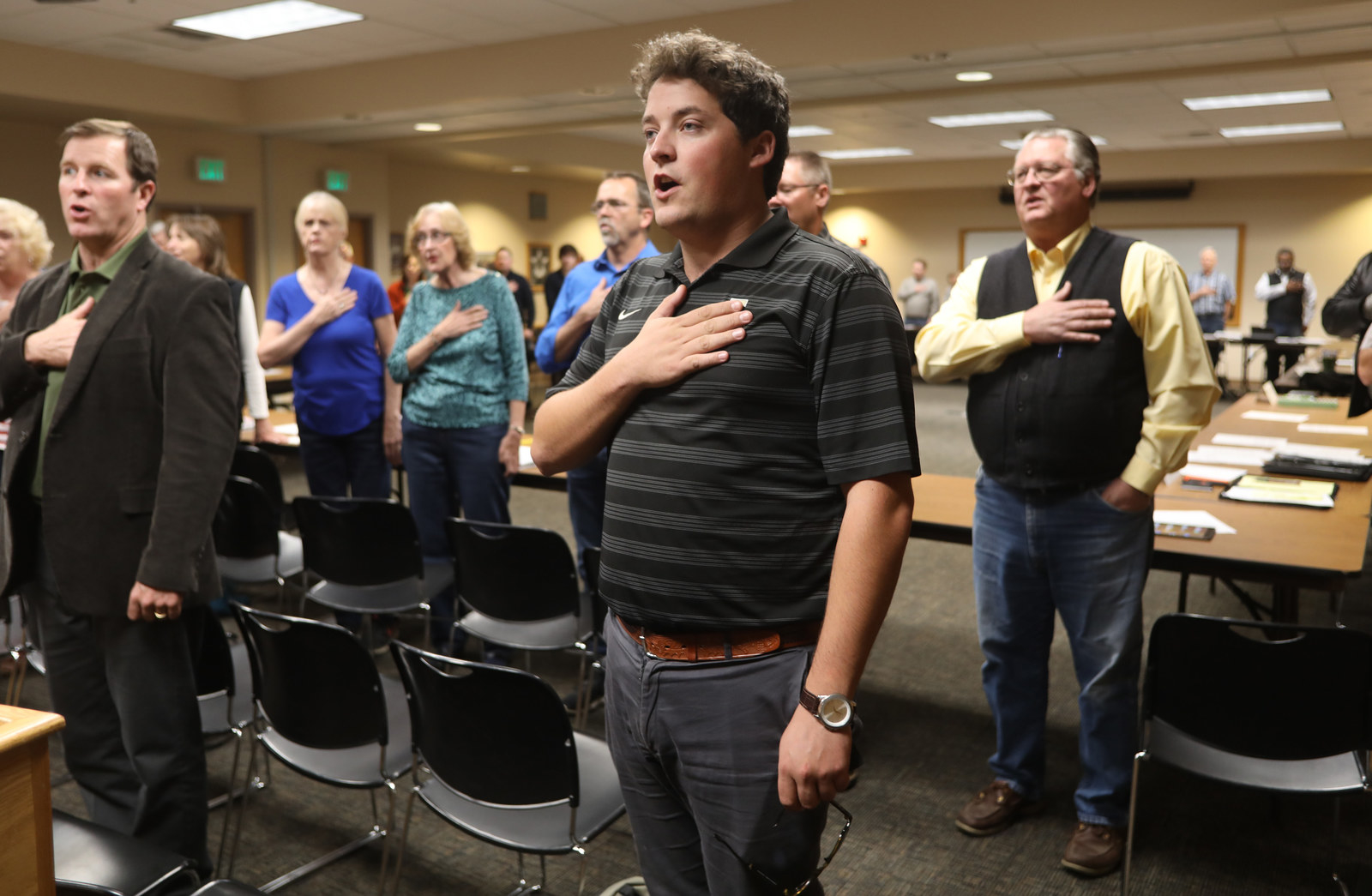
On a still-summer-warmed evening in late September, the members of the Central Committee joined to recite the Pledge of Allegiance in the basement of the county building. A woman standing next to me replaced “and to the Republic” with a forceful “And to the REPUBLICANS!” — nudging me, afterward, with a smile. Regan spoke briefly about recent protests in the NFL, which he joked would soon stand for “not for long.”
“As a father with a son in the military,” he said, “I would tell these guys to go to hell.” He also warned the committee against internal divisions and venomous arguments — which is why, he said, they would not be endorsing any candidate before the primary. It felt like a kinder, more conciliatory Central Committee — especially in contrast to the heated debate that surrounded the resolution to condemn the sanctions against Russia this past July.
The resolution to call for the repeal of urban renewal laws passed with little debate. Then Don Bradway rose and, with a practiced radio voice, read a resolution entitled “Protecting the Republican Brand,” detailing gubernatorial candidate Tommy Ahlquist’s extensive donation history to Democratic candidates.
“The research we’ve done here is fact, not innuendo,” Bradway said. “We look at this resolution as a service to voters.” The service, in other words, of informing the public that Tommy Ahlquist is not a conservative — and maybe not even a Republican.
There was objection, from moderate committee member Duane Rasmussen, that such a resolution might, in fact, be a form of reverse endorsement: If you come out with information suggesting that one candidate is not a Republican, you’re effectively endorsing the other two candidates. “This is not denigrating at all — all it’s doing is offering facts,” Regan added.
The resolution passed with unanimous support. When I asked Rasmussen later that night about the lack of opposition, his reply was deflated. “They have taken over,” he texted me. “There’s not much dissent left.”
The next morning, I met Bradway for breakfast. He’d just finished dropping off his granddaughter at school, and showed off a picture of her, wearing a troll wig, perched on his lap. “Last night was so important,” he told me. “We made the rest of the committee understand that we can do this: We can vet candidates. We’re not taking sides. We’re just trying to get the facts out, that here’s a guy who can’t get elected with a ‘D’ after his name — so he’s put an ‘R’ there instead.”
“You know, people who are no longer involved in the committee, they say that our only job is to support candidates,” he continued. “That’s just wrong. We would be abdicating our duty, as elected committeemen, if we don’t tell voters what’s going on.”
Over the next 24 hours, several moderate Republicans emailed to ask me about what had happened at the committee. Apart from Rasmussen, none had been in attendance. I was reminded of something Bradway had told me, in the nicest, cheeriest way possible, about those who decried the actions of the committee under Regan, and the move to the far right.
“They had their way of doing things,” Bradway said. “That’s the old way. This is the new way. And if people don’t like it? Vote us out.” ●
